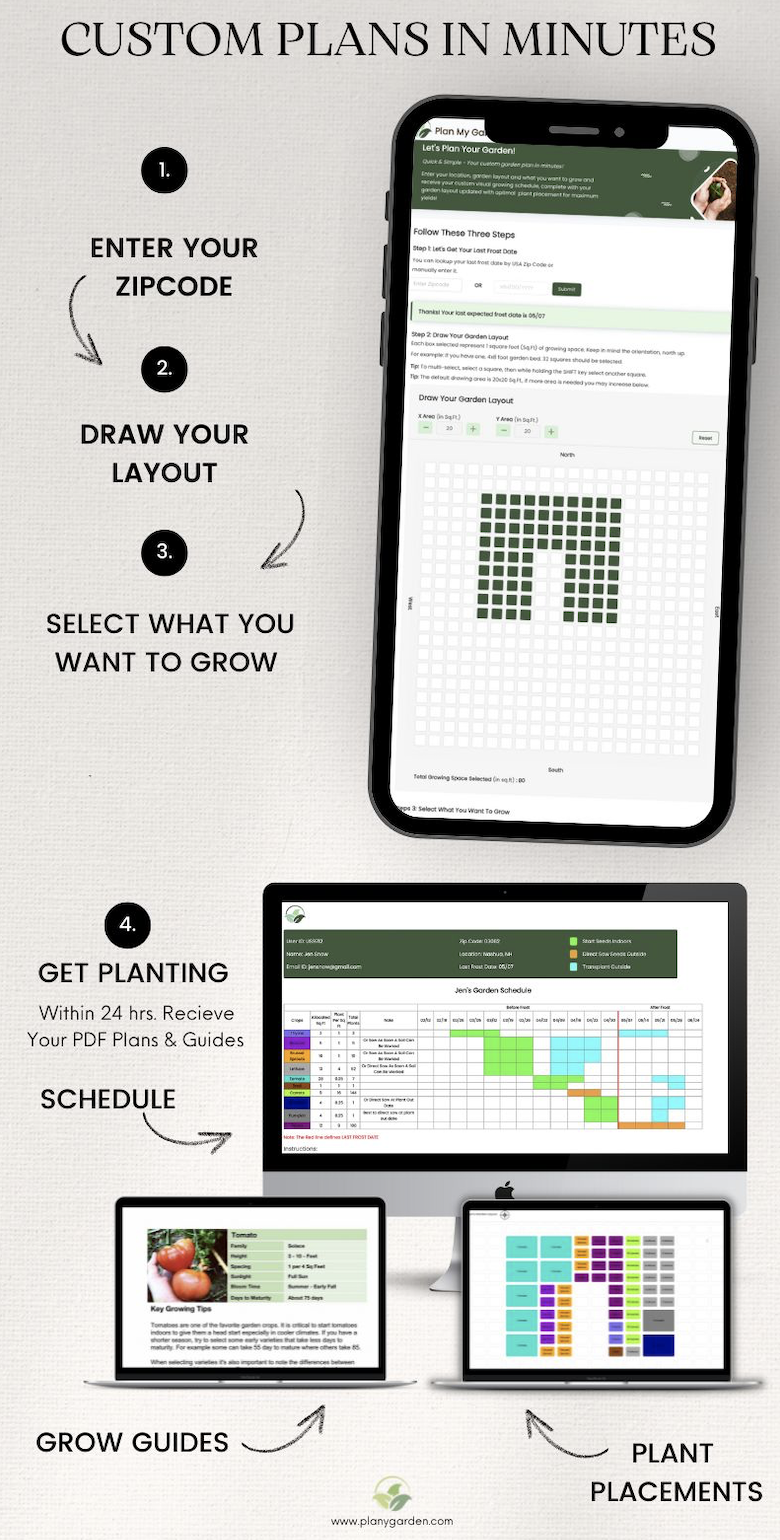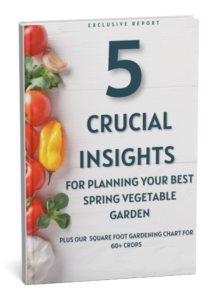Last Updated on August 30, 2023
Let’s review 10 cool weather crops to direct sow before your last frost date.
When it comes to planning your vegetable garden, these tips can be a game-changer, offering a jumpstart on your growing season.
In the New England region, marking the calendar about six weeks ahead of the anticipated last frost is a good rule of thumb.
If you’re uncertain about your last frost date, I’ve got you covered with the Plan My Garden tool. You can find it right here .
And hey, for an added helping hand, I’ve put together a nifty chart that breaks down germination times for various crops at different temperatures. Feel free to check it out here.
Your gardening success is my priority!
Peas: Leading the Growing Season
Let’s talk about peas, our season opener. You can get them in the ground before the last frost hits.
Sure, the weather might be freezing soon, but that won’t stop us. We’re getting out there today to plant peas. They’re tough – they’ll start sprouting even if it’s as cold as 40 degrees Fahrenheit.
We’re putting them on the north side of the garden and when they grow about an inch tall, we’ll pop in some trellises for support.
Beets: Early Arrivals in the Garden
When it comes to beets, you can start sowing them even before the last frost is out of the picture.
As soon as the soil is ready for action, beets can go right in. They’re a versatile crop – you can nab beet greens or wait for the bulbs to bulk up.
For a steady supply, consider sowing beets every two to three weeks. This tactic keeps the harvest rolling in until the middle of summer.
Radishes: Quick Spring Delight
Radishes are a fantastic choice to plant before the final frost comes knocking.
They’re a springtime favorite of mine due to their remarkable speed – you can have them ready to harvest in just about 22 days.
For a prolonged supply, consider making several rounds of plantings starting roughly six weeks ahead of the last expected frost.
After enjoying a round of radishes in late spring, the soil is usually warmed up nicely. That’s when I often follow up with a succession planting of beans, looking forward to a late summer arugula harvest.
Arugula: A Cold-Weather Gem
Arugula is a cool-season champ, perfect to sow before the last frost settles in.
As soon as the soil gets the green light, I’m out there sowing arugula seeds. They’re quite resilient, sprouting even when the temperature dips down to a frosty 40 degrees Fahrenheit.
And here’s the good news – these young arugula plants can handle a light frost. They thrive in temperatures ranging from 45 to 60 degrees. In just about six to eight weeks, you’ll have some fresh arugula ready to harvest and enjoy.
Kale: A Versatile Green
Kale is a versatile green that can get its start before the last frost settles in.
Direct sowing is one option, but I’m also a fan of starting kale transplants indoors to get a jump on the season.
Keep in mind that kale takes roughly 60 days to reach full maturity, so starting early can pay off.
In my experience, kale keeps on giving throughout the summer and well into the fall, making it a highly productive addition to our garden.
Lettuce: Crisp and Refreshing
Lettuce takes the stage before the last frost is even in view.
Once the soil is ready to roll, it’s time to get lettuce seeds in the ground. Direct sowing is a great option here, allowing for tighter planting – ideal for the cut-and-come-again method.
Keep in mind that lettuce thrives in temperatures ranging from 45 to 65 degrees Fahrenheit. With this in mind, early spring is the perfect window to sow these seeds, ensuring optimal growth conditions for these crisp and refreshing greens.
Swiss Chard: Colorful and Reliable
Swiss Chard takes its place in the garden plans before the last frost has its say.
For this cool-weather champion, direct sowing is the way to go.
If you’re looking to add a burst of color to your garden and your salads, consider growing rainbow chard – a vibrant treat for the eyes and the plate.
What’s more, Swiss chard is a trooper through the summer months, continuing to thrive.
My strategy is simple: I harvest the outer leaves, allowing the plant to keep producing right through the late fall, ensuring a steady supply of nutritious greens.
Carrots: Getting the Timing Right
Carrots earn their spot in the garden lineup before the last frost creeps in.
It’s a common slip-up to delay sowing carrots outdoors.
Direct sowing is the way to roll with carrots. The key here is to keep them consistently moist during germination.
For my game plan, I aim to direct sow about two to three weeks ahead of the anticipated last frost. To ensure the right conditions, I give them a good watering, then shield them with a board to prevent drying out. Once they sprout, off goes the board, and they’re on their way.
Spinach: Thriving in Cool Conditions
Spinach secures its spot in the pre last frost lineup.
Cool and damp weather is what makes spinach grin from leaf to leaf. Want a continuous supply? You can overwinter it – start in the fall, blanket it with mulch, and watch it persist into spring.
Alternatively, direct sowing is a solid plan. Once the soil’s ready, get those seeds in there. Plan on a six-week journey from seed to harvestable greens.
But take heed – as spring gives way to warmer days, spinach can be quick to bolt. To outsmart this, sow your seeds on the early side.
For prime performance, spinach seeds revel in temperatures ranging from 50 to 70 degrees Fahrenheit.
Potatoes: Timing and Frost Considerations
Plant your potatoes before the threat of frost is over.
Give them a head start by initiating their growth two to three weeks prior to the expected last frost date.
Be cautious not to start them too early though – potato foliage is susceptible to frost. While they can recover from frost damage, it does sap extra energy from the plant.
If frost is in the forecast, shield your potato plants with a protective covering like row covers to ensure their safety and vitality.
More Vegetables to Consider
Expand your options with a few more veggies you can directly sow before the final frost arrives. Think about broccoli, parsnips, and turnips – all worthy contenders for pre-frost planting.
And if you’ve got any additional favorites that make their way into the ground before the last frost and I haven’t covered them here, drop them in the comments below! Your insights are always welcome.
Need help planning your square-foot garden? No problem – we’re here to help.
Ready to plan your square-foot garden in minutes? With our easy-to-use tool, you can enter your zip code, draw your layout, and choose the plants you want to grow. We’ll send you a custom visual schedule, getting started guide, and plant layout specifically tailored to your square foot garden. Plus, you’ll receive a growing guide for each vegetable to help you get the most out of your garden. Don’t wait – get your custom square-foot garden plan today and start growing!


